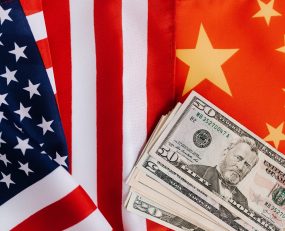
In a world that has undergone remarkable changes in recent years, exacerbated by the pandemic, Joe Biden appears keen on returning the world to its post-war / pre-Trump order, at least in terms of foreign policy and the global order. What was once considered to be a cornerstone of US policy, the centrality of alliances and multilateral institutions, has seen a significant erosion. If Joe Biden were to win the election, which is less than two months away, this is very likely one of the areas that will see a more drastic change in approach compared to the Trump administration. This realignment will also be crucial in a possible recalibration in his policies regarding China, as he is more likely to build a multilateral coalition of like-minded nations in negotiations rather than utilise unilateral tariffs.
Trade
As former Vice President to President Obama, Biden appreciates the value of diplomacy and the power of multilateral institutions. As part of the restoration of the US’ position and stance within international institutions a return to a functioning relationship with the World Trade Organization is expected. Historically, the WTO had been considered a means to a greater end, one of the main pillars providing the post-war order with stability through regulated global trade and has been an arbiter of trade disputes.
It has taken quite a beating and has been largely repudiated by the Trump administration, unequivocally signalling a move away from traditional multilateral approaches by the US. President Trump has accused the organisation of taking advantage of the US and claiming it was no longer in the US’ interest to remain part of it. His claims seemed sufficient to justify “unilateral trade actions outside of WTO channel” and in “disrupting the functioning of the Appellate Body, which has, in the judgement of the Trump administration far exceeded its mandate in ways that are counterproductive to US interest”. The Obama administration had attempted to utilise the organisation’s “dispute settlement mechanism to put pressure on China, filing multiple disputes that resulted in several policy concessions”. Biden is likely to rejuvenate the relationship, though there remain questions around his “Buy American” proposals and if they might be in violation of “US obligations under the WTO Government Procurement Agreement”. Regardless, a Biden presidency promises a return to a rules-based system and is expected to be reluctant to take unilateral actions undermining institutions it helped creating.
Equally, the world has also become more wary of seemingly unchecked free trade. Thus with his proposed Build Back Better policy, that partially aims to “re-shore supply chains through subsidies, tax incentives, public-private partnerships and ample government funding” and his pledge to make use of all powers the federal government has to offer to “rebuild US domestic manufacturing capacity”, there is also a distinctively domestic focus. Build Back Better and Made in America are pursuant of enabling and reviving America’s middle class. On this issue the two candidates converge to the point where President Trump even accused Biden of plagiarism. Though Biden also intends to levy a carbon adjustment fee on goods coming into the US, punishing countries that fail to meet climate goals as part of his economic plan, which is not a priority for the Trump administration.
China
While both candidates agree that the US-China relationship requires a strategic and updated approach, their methods are very different. Informed by his America First approach, Trump was mainly focused on balancing trading deficits (has not worked) by imposing tariffs on countless goods to friend and foe alike. Whereas Biden is much more likely to restore relations with trusted allies and address disputes through global institutions, such as the WTO and focus on issues like “industrial policies, such as intellectual property theft and unfair state subsidies for companies” . Biden agrees that the US’ reliance on China, particularly regarding critical goods needs to be revisited and proposes a $400bn federal spending plan to buy American-made goods in his economic plan. However, with the US public sentiment showing 73% of Americans hold an unfavourable view of China, a complete shift towards China is unlikely and a change will likely be found in details and rhetoric rather than a complete overhaul of current US policy. A former Obama minister counsellor, James Green, said he expects China to test Biden early on what he calls the bamboo deal “because it is Chinese on the outside and hollow on the inside”, which might lead Biden to a position to either “walk away from them or double down” – either way there is no easing on China in the short to medium term in sight. The main differences will be tactical.
If Biden were to win on November 3, he will be confronting a world facing immense uncertainty. He will likely need to marshal a global coalition that not only needs to resuscitate its economies but that also recognises that China can and will be part of that world and its recovery process. While there will be elements of a familiar US leadership, it will have to be a re-imagined version that includes enough room for manoeuvring opportunities and constraints alike.
Source: Transport Intelligence, September 15, 2020